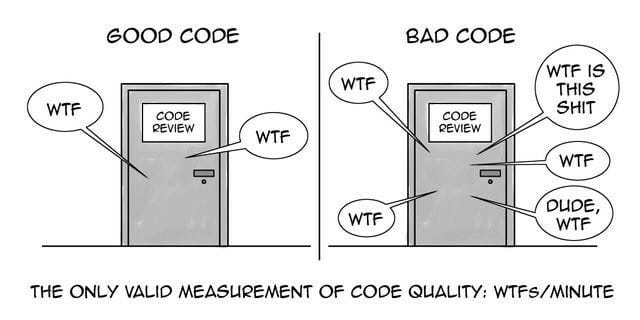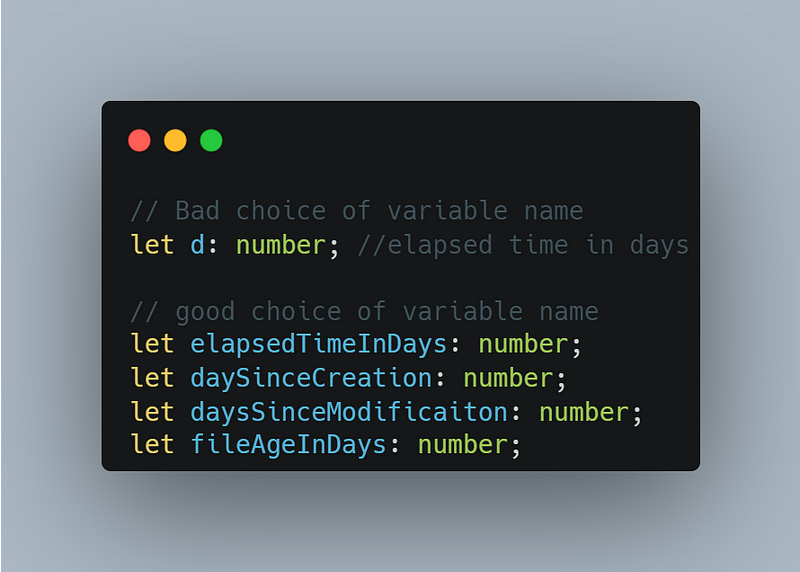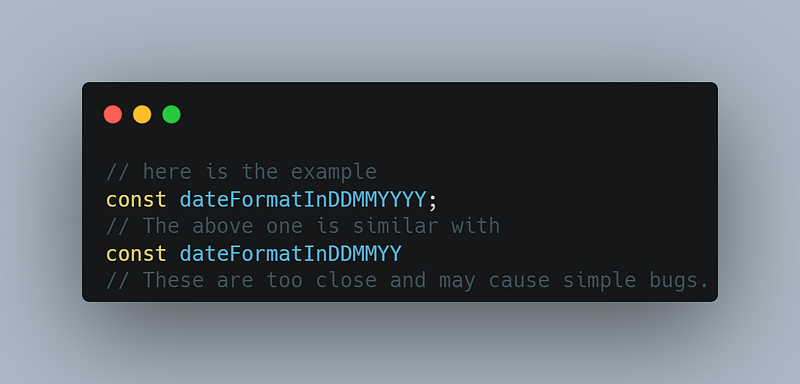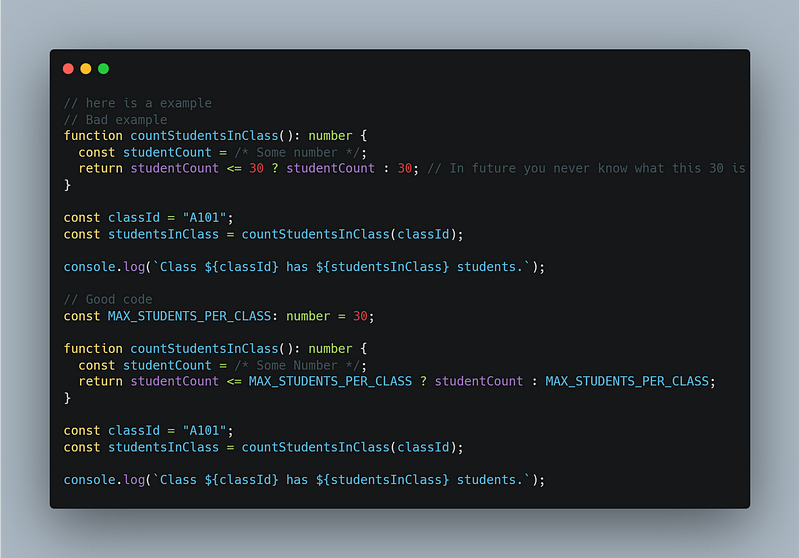The Art of Naming: Mastering Variable Names for Readability


In my journey towards code clarity, one of the first lessons I encountered was the importance of meaningful names. The way we name variables and functions can have a profound impact on the comprehensibility of our code. Here are some key insights I gained:
Use Intention-Revealing Names: Avoid turning naming into a riddle game. Your variable and function names should explicitly convey their purpose. Don’t use cryptic abbreviations and single-letter variables. Instead, opt for words that leave no room for guesswork.

Avoid Disinformation: Code should not mislead. If you call something an accountList, it better be a genuine list. If you use this name and the value contains some kind of object it will lead you to a bug. And also Beware of using names that are similar but vary in small ways, as they can be confusing.

Make Meaningful Distinctions: If names must be different, they should mean something different. Using similar names with subtle variations can lead to confusion and compilation errors.
Here are some examples of noise words that may cause problems Product, ProductInfo, and ProductData these info and data are indistinct noise words like a, an, and the.
Use Pronounceable Names: Choose names that you can easily pronounce. Avoid cryptic abbreviations and opt for proper English words that you can articulate.
Use Searchable Names: Make it easy to search for variables and functions within your codebase. Meaningful names like MAX_STUDENTS_PER_CLASS are more searchable than arbitrary numbers or single letters.

Class Names: Class names and objects should be nouns or noun phrases. Keep them simple and descriptive. For instance, use Customer or WikiPage instead of overly technical terms like Processor or Info.
Functions Names: Function names should include verbs or verb phrases that describe their actions. For example, use postPayment or deletePage instead of generic or vague names.
Pick One Word per Concept: Each abstract concept in your code should have a unique word associated with it. Avoid using similar words like fetch, get, and retrieve to mean the same thing in different contexts.
Avoid Using the Same Word for Two Purposes: Be consistent in your naming. Use words like add for adding and put for placing, rather than using them interchangeably.
Conclusion
In our journey to understand the power of meaningful names in coding, we’ve learned some valuable lessons. Think of coding as creating a beautiful melody, and your variable and function names as the notes that make up that music.
Here’s a quick recap:
- Use names that clearly say what something is for.
- Avoid names that confuse or mislead.
- Make sure similar names mean different things to avoid mix-ups.
- Choose names that you can easily say out loud.
- Pick names that are easy to search for in your code.
- Keep class names simple and use verbs for function names.
- Use unique words for different ideas.
- Be consistent in your naming choices.
Following these simple guidelines, you can make your code more straightforward and easier to understand. It’s like creating a beautiful tune that anyone can appreciate. As you continue your coding journey, remember the importance of clear and meaningful names — they’re the music that makes your code sing! Happy coding!